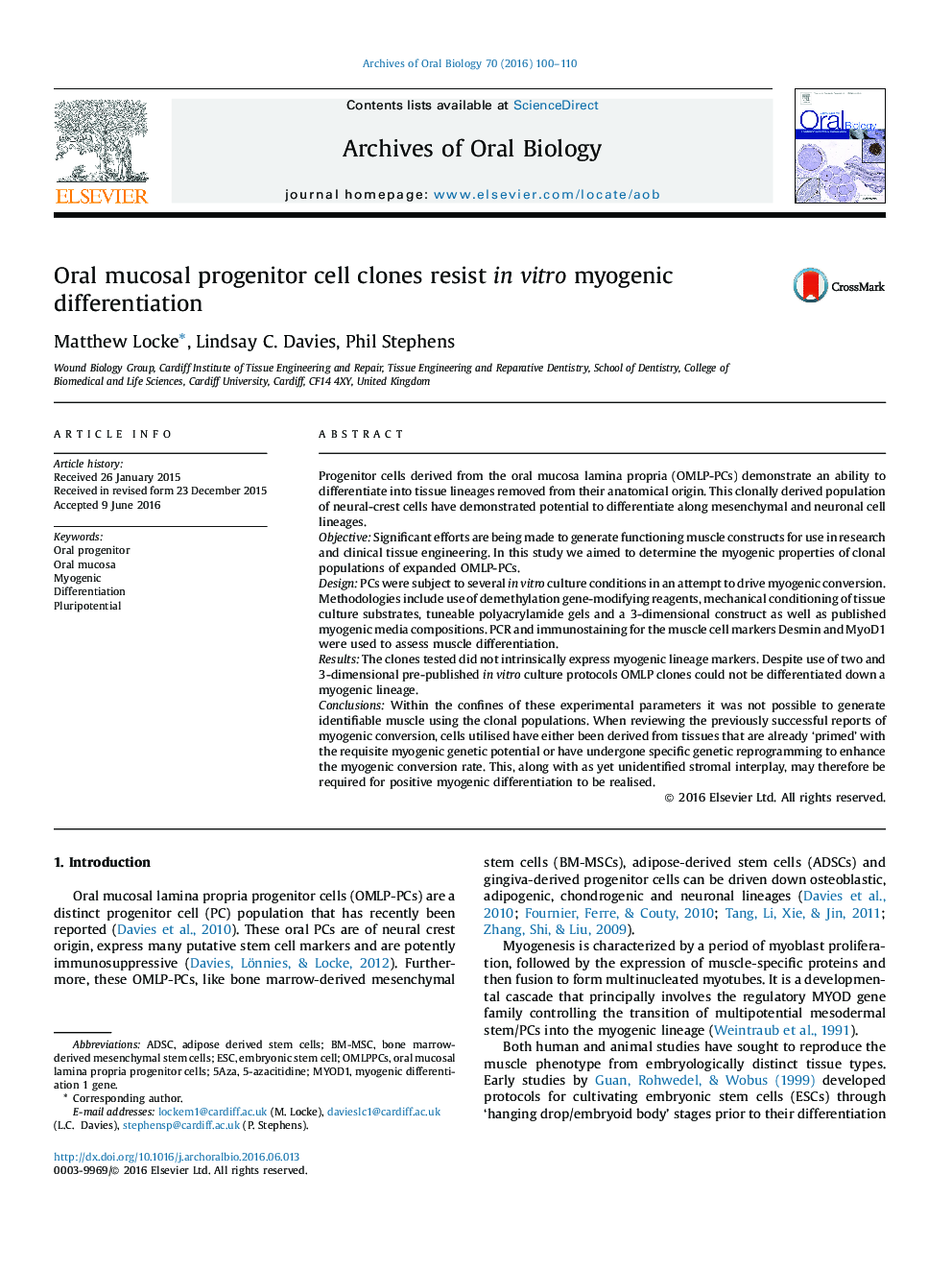| کد مقاله | کد نشریه | سال انتشار | مقاله انگلیسی | نسخه تمام متن |
|---|---|---|---|---|
| 3120601 | 1583283 | 2016 | 11 صفحه PDF | دانلود رایگان |
• Oral mucosal lamina propria progenitor cells are a distinct progenitor cell population.
• They are of neural crest origin and express many putative stem cell markers.
• Have shown to be potently immunosuppressive.
• They were subjected to published myogenic tissue culture protocols.
• Proved resistant to muscle differentiation.
Progenitor cells derived from the oral mucosa lamina propria (OMLP-PCs) demonstrate an ability to differentiate into tissue lineages removed from their anatomical origin. This clonally derived population of neural-crest cells have demonstrated potential to differentiate along mesenchymal and neuronal cell lineages.ObjectiveSignificant efforts are being made to generate functioning muscle constructs for use in research and clinical tissue engineering. In this study we aimed to determine the myogenic properties of clonal populations of expanded OMLP-PCs.DesignPCs were subject to several in vitro culture conditions in an attempt to drive myogenic conversion. Methodologies include use of demethylation gene-modifying reagents, mechanical conditioning of tissue culture substrates, tuneable polyacrylamide gels and a 3-dimensional construct as well as published myogenic media compositions. PCR and immunostaining for the muscle cell markers Desmin and MyoD1 were used to assess muscle differentiation.ResultsThe clones tested did not intrinsically express myogenic lineage markers. Despite use of two and 3-dimensional pre-published in vitro culture protocols OMLP clones could not be differentiated down a myogenic lineage.ConclusionsWithin the confines of these experimental parameters it was not possible to generate identifiable muscle using the clonal populations. When reviewing the previously successful reports of myogenic conversion, cells utilised have either been derived from tissues that are already ‘primed’ with the requisite myogenic genetic potential or have undergone specific genetic reprogramming to enhance the myogenic conversion rate. This, along with as yet unidentified stromal interplay, may therefore be required for positive myogenic differentiation to be realised.
Journal: Archives of Oral Biology - Volume 70, October 2016, Pages 100–110
